The 50 States Project is a series of candid conversations with interior designers across the country about how they’ve built their businesses. This week, Durham, North Carolina–based designer Heather Garrett tells us how she creates a high-trust, low-contact relationship with her clients, why she charges a single fixed fee for large-scale projects, and how she stays motivated to keep marketing her business even when she’s tempted to take a break.
When did you realize that you wanted to pursue a career in design?
This was a third career for me. I graduated from college with a degree in art history, then moved to New York and got a job at Sotheby’s. I had done an internship there the summer before, and I was just blown away. I was on the marketing side, but just to work within the world of antiques and artifacts as an art history major was incredible, and I thought I would be there forever, or whatever you think at 22. But I was laid off with a whole troop of people shortly after I arrived, so I began working for an art dealer downtown. It was exciting at first, but I realized I didn’t really have my hands in it in a way that satisfied the creative in me.
Then I met the man I would marry and moved to Boulder, Colorado, and lived there for six years. That was a very dramatic change—in the mid-1990s, Boulder was a lot more grassroots than it is now. I began learning the art of ceramics and spent several years as a potter, making things and selling them. It was right when Pottery Barn and other [retail brands] were beginning to cast molds of these very handmade-looking objects, so buying actual one-of-a-kind items was becoming less necessary because you could buy something that felt one of a kind. I realized it was going to be a tough way to make a living.
I was looking for a way to merge my love for art, drawing and painting with the understanding I had built about business. I found myself always remaking my spaces, and I finally just realized if I was going to start over again, it’s possible that I might be good at interior design, and that I might actually really enjoy it. So when we moved to New York, I got an internship with Robert Couturier.
What a dreamy entree into the design world!
I know. I had always adored his work, and I thought, “I’m just going to try.” So I got the internship, and I was permitted to be a fly on the wall in his office. I fell in love with design, so I enrolled to get my master’s at Parsons. The only reason I hung up my shingle is because we ended up needing to move again when my husband made a career change, which is how I landed in North Carolina. But after we moved down here in 2001, I got divorced. I quickly realized that with my two little kids, it was going to be pretty hard for me to do what I needed to do while working for a firm here. So instead, I just started doing what I could by the hour: picking out paint colors, doing swags and jabots—all the things that were happening here in the South.
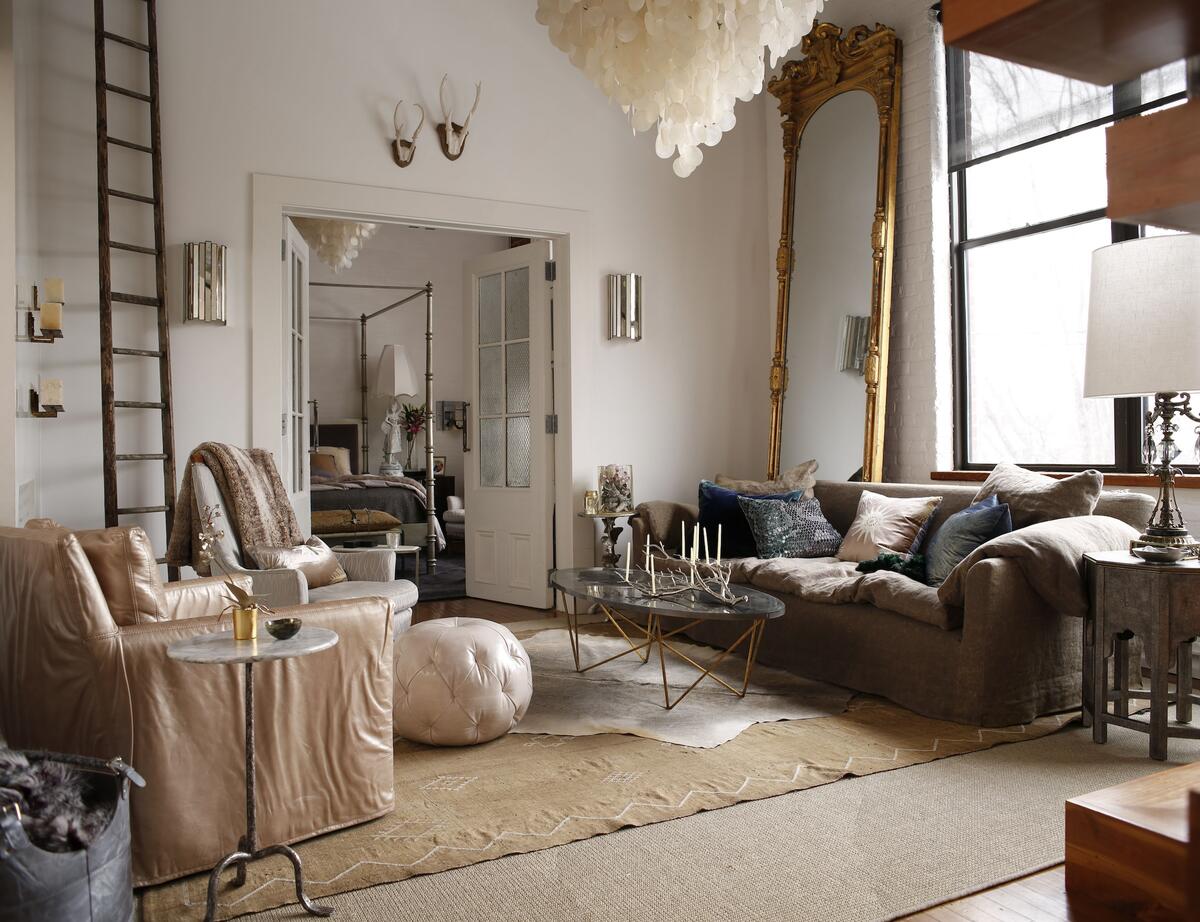
What was the turning point after all of those small jobs?
In 2006, I was given the opportunity to do a room in a showhouse. I became convinced that it was a good chance for me to demonstrate what my work was about, so I scraped up all of my money. And after doing that, I started to actually get calls for the kind of work I found interesting. It was my segue into something that was better for me, and I really began to make the money I needed to make.
Besides the showhouse, how did you put yourself on the right track to attract clients that were a better fit?
This was in the analog days, right? So when I did the showhouse, I had it photographed and it was in the local magazine. So I took those magazines and delivered them to every Realtor’s office in town. I had little media kits made and I brought everybody donuts. I thought, “If I can get the photos in enough hands, I think I’m going to be OK,” because people were really starting to move [to the Durham area]—nothing like what has happened in the last few years, but there was a groundswell for sure. And so I thought, “I’m going to get a couple of Yankees who want me to do something different than what they’re finding here.” It’s uncomfortable for me, but I really held out my hat and I asked for work.
Is that kind of marketing effort something that continues to be part of your business today?
Oh, yeah. I mean, it remains uncomfortable for me, but it is just incredibly important to make these relationships. Whether it’s with a builder, developer, real estate agent or publisher, I just keep approaching in a way that says, “I want to be part of this. I’ve seen this thing that you’re doing, it’s really interesting, and I’d like to participate in that next time.”
There’s a temptation to feel like if I’ve really made it—if I’m successfully doing the work I’m doing—then more work will just come to me and I won’t ever have to reach out. But I think building these relationships and reminding people that you’re interested in what they’re doing, I think it’s pretty important.
What does that look like for you today?
I live in Durham, and my work began exclusively in Durham. But so much of the growth that’s occurring now is happening in Raleigh, and a lot of builders have emerged there. Some of them have been very established and have been there for a long time and I’ve known them a long time. But there are a lot who haven’t, and I remain convinced that if I want to be participating in the growth that’s happening there, I need to be trying to create these relationships with the people I don’t know who are doing the work.
Now, I don’t think anyone wants to have donuts with me anymore. These days, it’s more about picking up the phone and making a call, or sending an email or a message on Instagram. I’ve also had to repeat myself a lot. It’s a humbling realization that in a growing city and a growing economy, it’s important to remain persistent. You don’t get to just land on a perch somewhere and stay there.

The last five years really changed a lot of designers’ businesses. How have you shifted what kind of work you want to do, or what you’re saying yes to?
I learned the business by working with Robert, who had this very turnkey way of operating—that was the first exposure I’d ever had to the way a designer runs a business, and so I imagined that everyone did it that way.
What was his approach?
The process was to do a design study, go away and develop the drawings with this global vision for the way the client would live their best life, and then present to them with drawings, materials and furniture plans that demonstrate your master plan. Then they go away while you do the whole thing for them. I mean, for Robert, he was working with a lot of people who had second and third homes, so the idea really was that they could just go about their lives while everything was installed and finished. But there was always one iteration of the design, one big design presentation, one approval process and one installation.
When I moved here, I was doing things one hour at a time, right? One paint color, one piece of fabric. But I knew that it was very hard for clients to catch the vision—and it was hard for me to ever be finished when I was doing it that way. I would walk in and see the whole vision pretty quickly, so it was frustrating that I didn’t have clients who either had the interest or wanted to spend the money to do things [faster than] a chunk at a time. I knew that I had to figure out a way to get myself back into that position where I could do things the way I observed them being done so beautifully in Robert’s office, and I have been working toward that ever since.
How long did it take to get there?
It’s been at least 10 years of really being able to roll out my projects in that way—the [changes in the industry these] last five years have just meant that they’re bigger and they last longer. And it’s made it more important to do that kind of turnkey work, because a lot of people who are building a house to move here don’t live here and they need somebody who, once they sign off on something, can finish the entire thing.
Absolutely. But what’s revelatory to me about your approach is just how few touch points you have with your clients. As you said before, it’s one presentation and they approve everything. What I’m hearing from so many designers is that they’re exhausted by how much client management they’re having to do as they’ve scaled up.
This is so interesting to me, because our projects are bigger now, but I have not scaled up my firm. I had experimented with that previously, and what I realized is that I end up doing all of this managing. That creates a lot more opportunity for client questions and misunderstandings, or for a variety of project management styles [to emerge] within the firm. I had a moment where I was like, “Hold on a second. We’re getting away from this process through which I’m positive we can hit it out of the park. Now I’m no longer positive.”
The way that I operate, I can only ensure that it goes the right way if I’m the primary point of contact with the client, because I really shape those expectations. Even in the nuances of the conversations I have with them—if I give the same information to a project manager and they try to communicate it to the client, there just isn’t the same result. It’s not the same level of trust. So in our model, we have a very predictable cadence of, as you say, touch points with the client. And it’s very few. But it somehow inspires. We make the promise to the client: “You can talk to any other client about how this went. If you obey the rules, if you do it [our] way, we promise you that it’s going to succeed—and if we are stumbling in some way, we promise you that we’re going to raise our hand and ask you for a conversation about it.” But it’s pretty strict.
Was that just the way you saw it done?
I think so—it’s really a reaction to the way I saw Robert doing it. There was a process. He was much more of an old-school gentleman’s decorator—he had these relationships with the clients, so they would have lunch and all these things. But in terms of the project, it was a pretty strict, boundaried road with clear lanes—you stay in yours, and you explain to them that it’s important that they stay in theirs in order for it to go well.
Everybody’s got some challenges where you find yourself breaking all your own rules, and then you regret it and the client’s not happy and it’s a terrible outcome. There have been those [incidents]. But generally speaking, I’ve always been that way because I saw how successful it was.
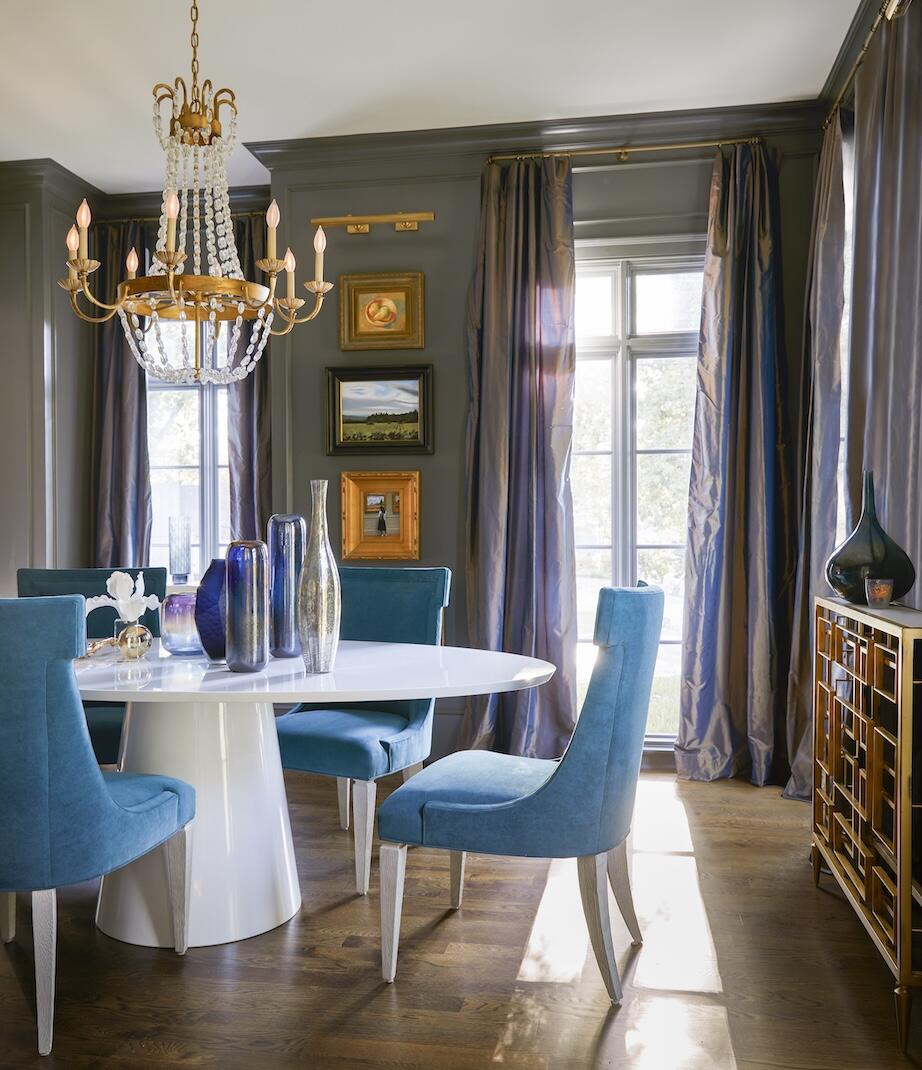

Walk me through what that process looks like.
Once a client signs on, we embark on a design study. Everyone calls it something different, but that’s when we do all the image gathering and lifestyle requirement gathering. We talk about frustrations they might have about their current living situation and about their hopes and dreams. And that’s a very serious process for us. I mean, for our most recent job, we actually had three meetings just about that—which is pretty unusual—just to make sure, because I can’t get out of there until I’m positive that my design director and I both completely get it. Everything will fall apart if we don’t.
Are you showing them stuff in those meetings, or is it all just pulling from them?
In this phase, we’re not showing them anything. We’re asking a ton of questions and they’re showing us stuff. We’re going to keep asking questions until we are pretty sure we get it. From there, we disappear for what we say will probably be a long time. That’s when we’re developing drawings. I mean, we haven’t really disappeared, but we’re not showing up again for a while. If there’s an architect involved, we’re pulling elevations, or our office is putting the plans into SketchUp and we’re starting to work in 3D. We’re trying to wrap our minds around the particulars of how the space is going to be lit, the artwork that’s going to hang on the wall, the exact size of the furnishings for the furniture plan—because when we come back, it’s with a full presentation of everything. It’s a stack of fabrics and a presentation that shows three-dimensional drawings of specific pieces of furniture, lighting fixtures, pieces of artwork, all of that together.
And they say yes to everything.
Pretty much. [We accomplished so much that] it doesn’t tip the applecart if they say, “We need two chairs there,” or “It might be better to have a sofa,” or “I’m not really sure I want an oval dining table—I think I want a square.” If we’ve paid attention in that design study, it shouldn’t be more disruptive than that. We iterate for them what they need us to adjust, and then we send them an invoice.
Have they paid before that point?
When they sign the agreement, they pay a deposit on the service fee. At the point of a presentation, we’re presenting all the visuals and giving them an itemized estimate of what they can expect to spend room by room if they do it in a way we’re suggesting. Then we send an invoice and they pay a huge amount of money. It’s a very painful, make-you-want-to-vomit activity. And as a side note, it’s something I have never understood, exactly: how to do it in a way that you’re building small costs on small costs on small costs.
When you’re helping somebody a little at a time, I always found that there was just an eventual level of frustration or anger—either that, or just disbelief, like, “How much is this going to cost?” We try to establish early on that this is what it’s going to take, and it just is, you know? And it might mean that this is too painful. You might want to do this with somebody hourly so that you can control how far you go and how fast you go. But if you want the house built and finished in 18 months, and you want to move in and have it feel like you’ve lived there for years, this is the truth of what it’s going to cost you.
So after your presentation, the client is paying for you to order everything.
Right. They pay and then my office starts ordering everything; meanwhile, my design director and I now are on-site in the field implementing all of it. So what happens [for the client is that] the invoice gets paid and then everybody disappears from each other again while the project unfolds.
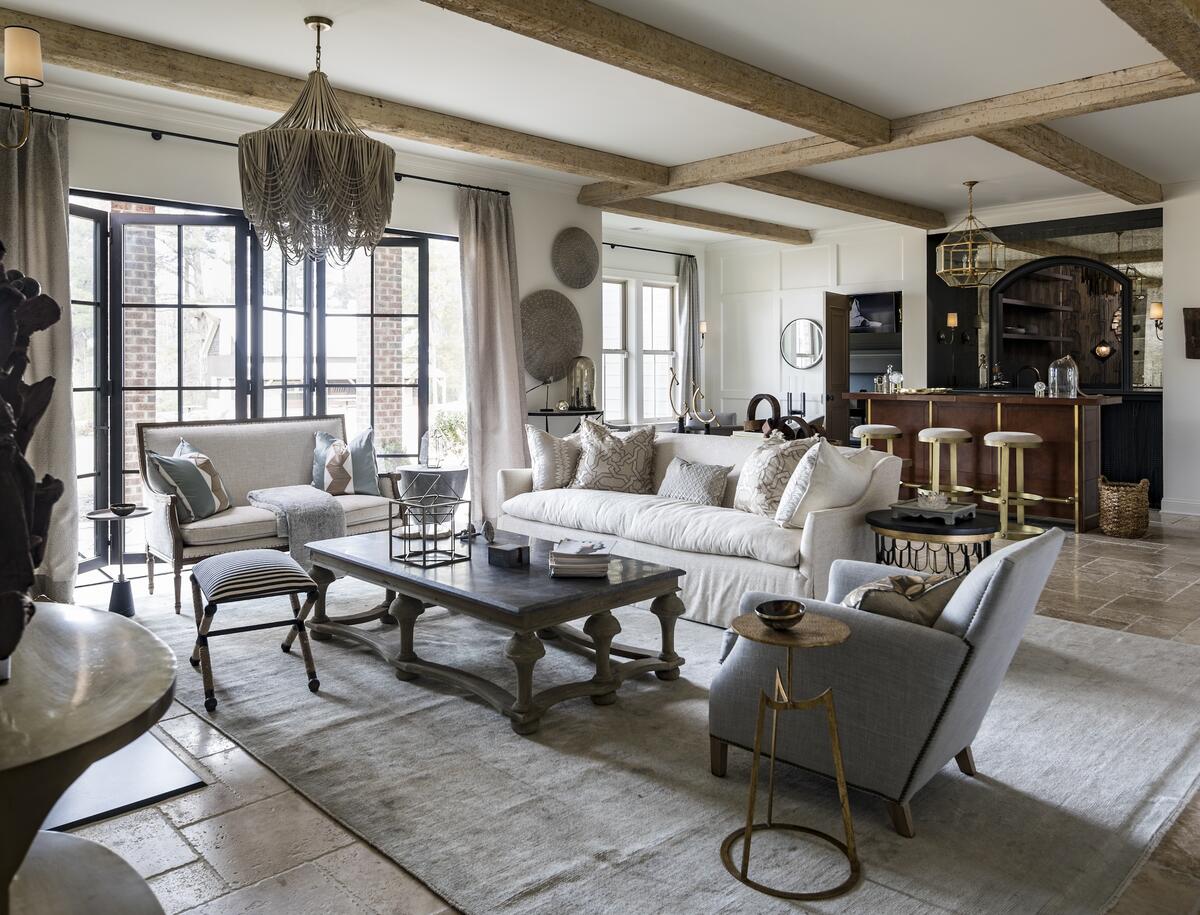
You talk about going away and coming back. But how are you keeping clients in the loop along the way? Or is the promise that they really don’t have to think about it?
The promise is that they don’t have to think about the things that we settle—and also that if something changes, or if something needs an update, that we’re going to reach out and tell them.
We [manage our projects] in Trello. That’s the way we communicate: We give updates there, we’ll tell them the direction we’re leaning if there’s a choice point, and then I say, “And you tell me if you want to have a conversation about it or if you want to do something differently.” But I try not to make it this ongoing dialogue all the time, with emails back and forth with questions like, “What do you think about this?” No. I’m going to tell you what I think about it—that’s what they’re paying me for, right?—and then you can let me know if something doesn’t feel right to you. And we’ve determined so much early on that there isn’t a lot of that, but as things are getting ordered and stuff is out of stock or something needs to be reselected, my office communicates that with the client on their Trello board: “We discovered this is gone, so we need to make a new choice. This is the reselection. Let us know if this is not going to work for you.”
So no emails with clients. At all?
We ditched emailing with clients a number of years ago because it was just so crazy. You’re talking about 15 different things in one email chain. It’s too much.
How do you get clients to be responsive in Trello?
It was amazing to me at first that clients were willing to do it. In my heart of hearts, I was like, “Who wants a new app with new parameters?” But I kind of made it not an option, and when they see how clean it is—I mean, the Trello notifications land in your inbox as if you’re getting an email anyway, you click a link, and it takes you to [the conversation]. Everybody responded so well to it. And they don’t want to hang out and email with me either, you know? I think it’s everybody’s goal to be able to do other activities and finish the house.
Can you tell me a little bit about how you approach billing for each phase of the work?
We have a single fixed fee for the entire relationship, from the earliest conversations through the post-installation punch list, and the project is punctuated by due dates for that fee. We’re capturing some of it when we sign the agreement, some of it when we give the presentation, some of it when we are midway through the construction phase (or the implementation phase if there isn’t construction), and then the rest of it when we finish our promise of cleaning up the mess we made with the punch list. If there are any hourly fees, it’s strictly limited to if someone has a household move and we’re responsible for that, or if there are additional architectural drawings needed.
What drew you to that approach?
It provides so much relief for us to operate through a single fee. That’s another thing that was part of my very earliest experience working for Robert—there was a [single] fee for doing a project. I knew from the beginning that as soon as I graduated from picking out paint colors or driving around with bolts of fabric in the back of my station wagon, I would want to do it this way. And I find that the clients prefer it too. When things are slow, we’ve sometimes done hourly work, and it produces so many more concerns and questions. I cannot stand it. It makes me so stressed out.
You’re also making a margin on product.
Yes, we also charge a markup, where we are selling things at the market price. Truly, what you could purchase this item for anywhere else in the world, that’s your price.
So it’s not a set percentage?
I was really against cost-plus, just because it seems like the deeper the discount [I have] because of the length and depth of my relationship [with that brand], the less I benefit. It doesn’t recognize the benefit of my experience in this trade. That’s why I’ve opted to charge a market price for a very long time—it’s fair to everybody. If you buy it somewhere else, this is what you would pay. If you buy it from me, I probably lose money on some things and make a lot on others. And as my client, that’s not your business.
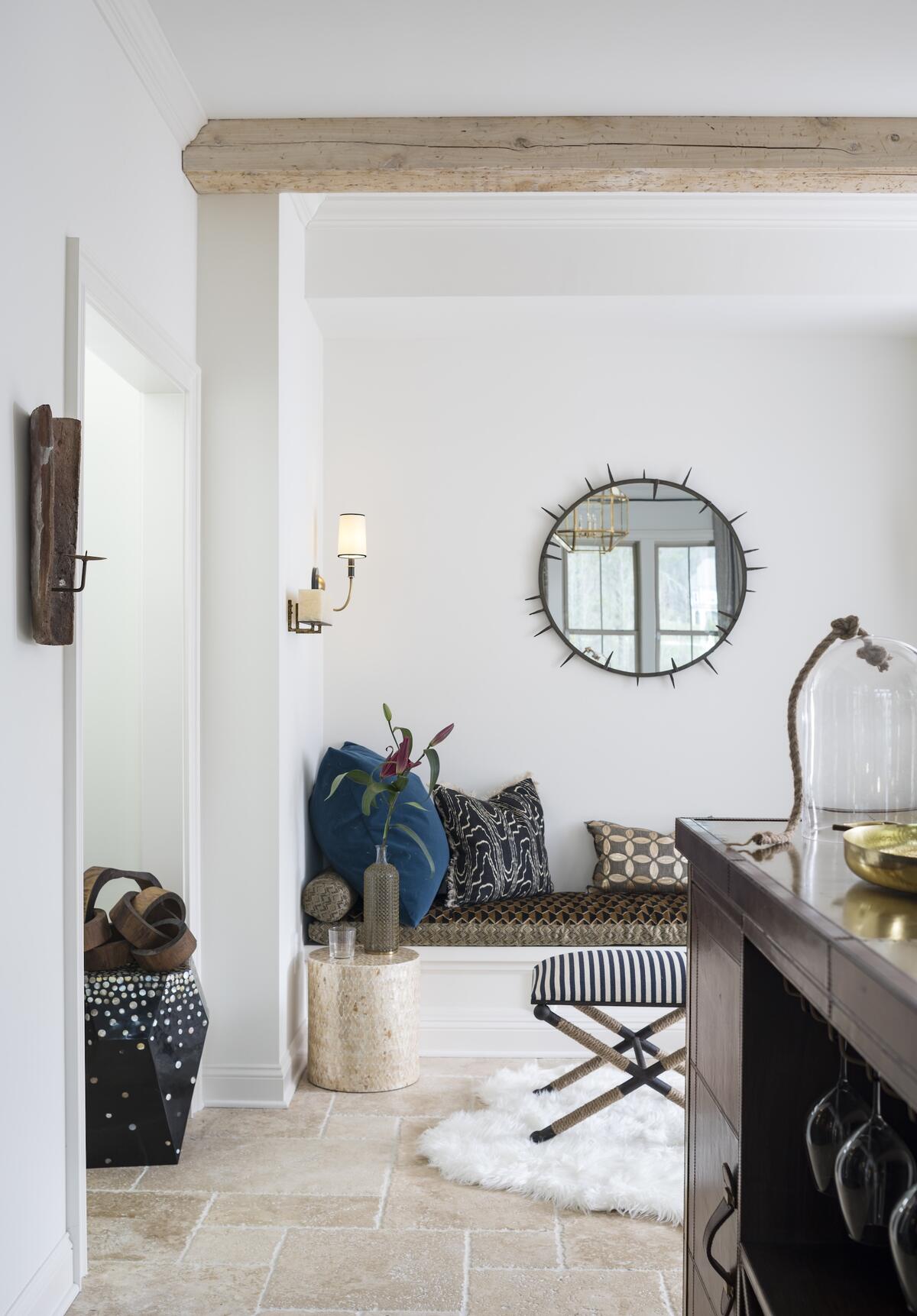
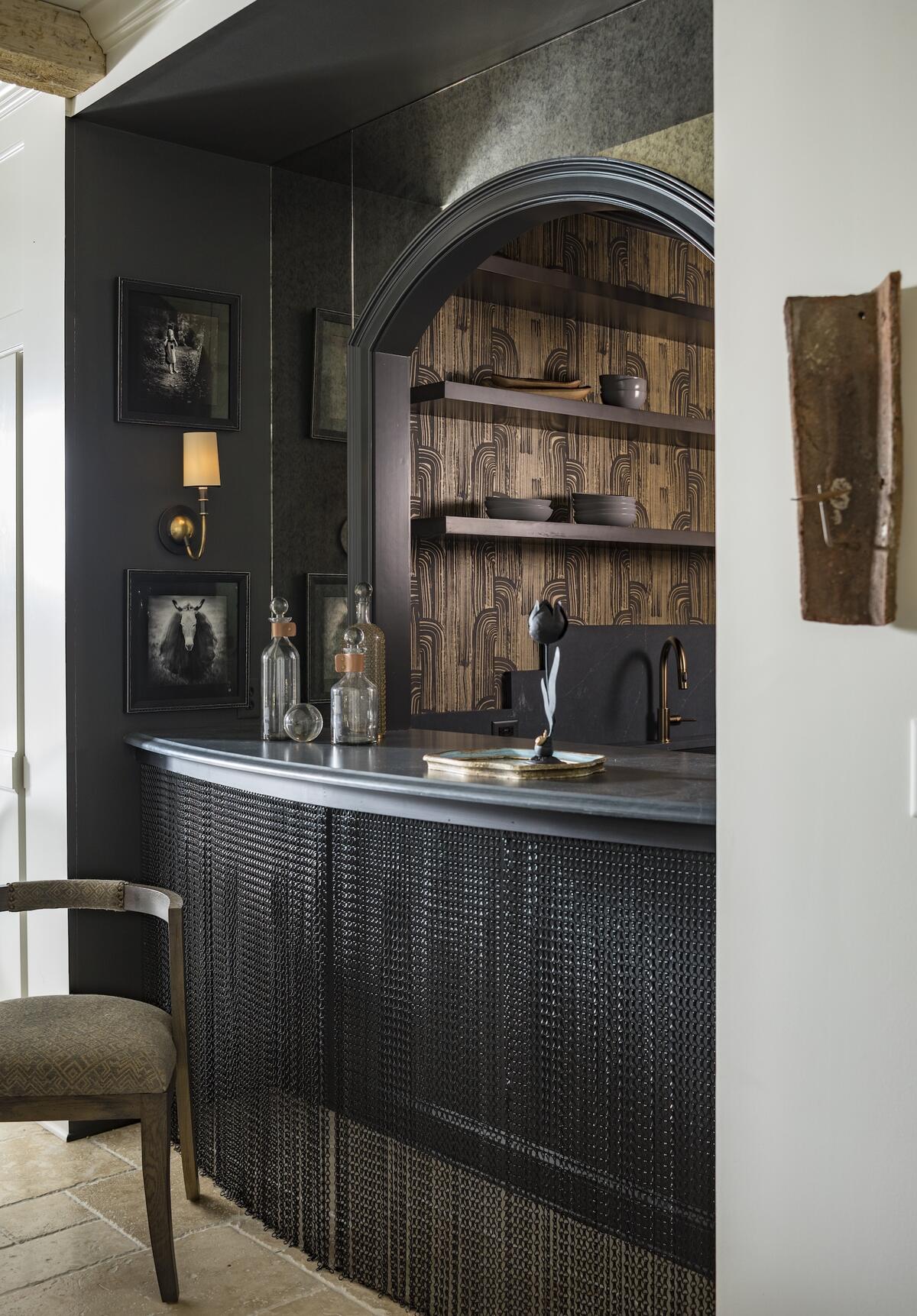
What does your team look like today?
We’ve got our design director, Melissa, who has been with me for 14 years. She and I do the design study and all of the designing together, and I feel very fortunate that we essentially share a design mind after all these years together. As the client is talking, before we’ve even spoken to each other, we know now that our brains are both going to the same place—there’s a lot established before we have to even talk about it.
Once we do the selections and furniture planning, we have a design project manager, Brittany, who manages all of the spreadsheets, invoicing and order management. We’ve also got a great assistant who helps with all the things you might imagine, from measurements on-site to ordering support. And then I’ve got a residential architect who works part-time with me doing drawings and elevations. That’s one of those things where there’s not a constant need, but then it’s a very intense demand for several months. And, honestly, I do so much drawing too—I’m very analog. I do it on the iPad now, but I pretend it’s paper with markers.
Do you ever think about growing your team?
I’m actually considering [bringing on] another designer right now, but I just don’t think that’s where I want to be. It’s easy to feel like, “Oh, I could do so much more [if I had the help],” but I don’t want to do things just because everybody else is doing them. I don’t want to scale up. I don’t want to have more volume.
What made you think another team member might be the answer?
I love my life. My office is a block from home, and I love it, but it’s a lot. It’s intense. And it’s a lot more work now than it used to be. So we’re all working hard—I’m working a little harder right now than I’d like. That’s the truth.
Is hiring the only path to easing that?
That’s the thing: I don’t think so. And when I’ve felt this way before, it’s always been a reach for some relief. But [onboarding a new team member] actually creates additional work because it throws my predictable, steady deliverables into some chaos.
One thing I’m considering instead is how we can just work differently. Our work has gone from a ton of decorating, to some decorating and some remodels, to a lot of remodels, to a lot of construction now. Every time the business demands change, you’re on this weird bridge. Right now, there is a lot of building, which is making greater demands on me. I’m really weighing the best path to some relief while still keeping my deliverable predictably excellent.
Is that a challenge to protect that?
The home run? Yes, and I think it’s the most critical thing. That’s such a nonnegotiable for me that all kinds of things are sacrificed [for the sake] of that. Sometimes it’s at the expense of my sanity. Sometimes of profitability. You can’t make a way of that, but I think reputation and happy clients are just so important—and that goes for clients of mine, but also the clients of a builder.
What is a full plate in terms of the number of projects happening at the firm at a given time?
Working at this level, it’s important that I be doing no more than three to four projects. I’m not the firm doing 20 jobs—that’s just not happening.
Is the shift toward construction happening across the entire Raleigh-Durham area?
Raleigh in particular, but the Triangle more generally, remains one of the fastest-growing places in the country, one of the best places to live, all that stuff, and so the growth continues to be strong here in terms of construction. At the highest end here, it doesn’t necessarily matter what the real estate market is doing elsewhere—it’s doing its own thing here, and there continues to be this insane demand.
The jobs we take, we want to finish it, soup to nuts. That’s only for a particular kind of client. But there are also a lot of people buying homes and wanting to do a refresh, or wanting to redo a couple of rooms; currently, I’m not participating in that. It’s not that I don’t want to, it’s just that I can’t—that goes back to the size of my team, and the scope of these projects, and the way that I love to do this global vision work.
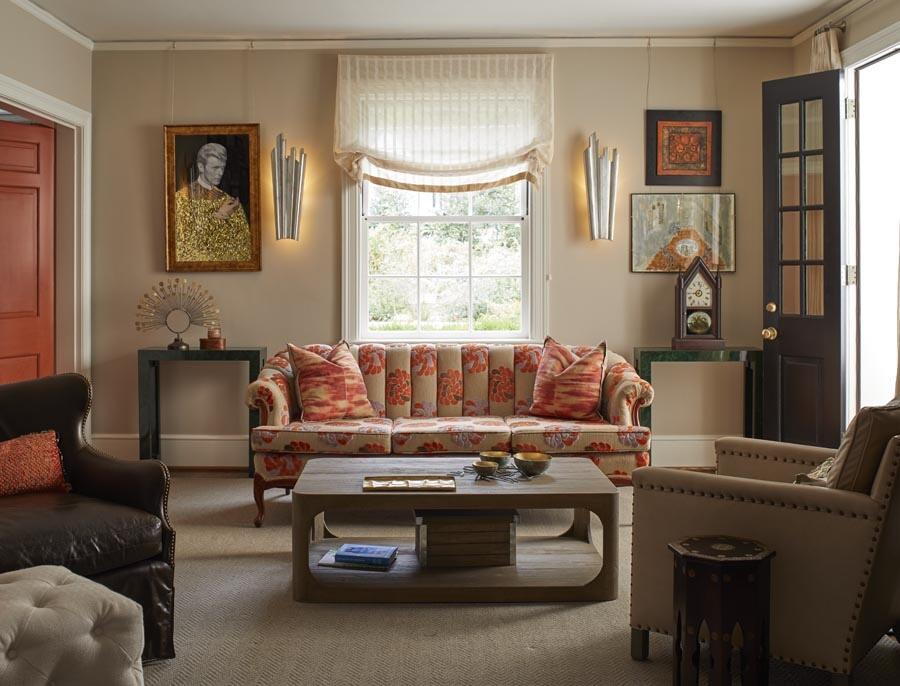
You mentioned that the construction work is more demanding. Are there other shifts in the business that have changed your approach?
I’m exhausted with the pace of building that’s required now. People are moving here and builders are promising anything they have to in terms of timelines. So I’m exhausted, even just from a design standpoint—
Of racing to keep up?
Yes. That’s what makes me fantasize about having another designer [on the team] again. But it’s not because of the clients, because clients are reined in. I told you, I’m strict! But it wasn’t always like that—I used to email late at night, or I would respond to texts on the weekend. This was a long time ago, but clients used to have the upper hand, big time. And it was out of fear.
What did you do to fix that?
I got a business coach. Actually, I’ve had two coaches—one was very early, and the second was Sean Low. I hired him a couple years ago, when I was in the middle of this real estate thing. It was going to be this amazing trifecta: real estate, construction and design. It started like right before Covid, and then it just became an albatross. By the middle of the pandemic, I was like, “What am I doing? What happened? How do I suddenly have a real estate firm? I don’t even care about this.” It was such a mistake.
How did Sean help you right the ship?
He helped me get out.
He helped me figure out: “You love to draw and you love to run this tiny team. And now you have all these people again. Even if they’re not really in your firm, they’re adjacent to it.” He also reinforced the idea my first coach had suggested to me, which is that for clients, this is not their thing. That’s why they’re hiring a designer—they want to place their trust in somebody who’s confident in their process. So if you’re constantly willing to be swayed by these emails questioning or casting shade, whether on what you’ve presented or how you’ve outlined something, then it plants these seeds of doubt in this person that they’ve hired, and then it snowballs from there. My behavior hadn’t changed, but I had those fears inside and they were starting to creep out, and Sean helped me rein that in.
My first coach had written this book about balance, and [her message] was a different way of saying the same thing, which is that clients want to be confident in somebody who has their shit figured out, who has a system, who can promise a predictable result based on the system, and then they just want to be told how to do it. And so when you’re letting them be in charge of the thing they don’t even know anything about anyway, everybody’s a mess. It really helped me, and so I’m so grateful that one problem I don’t really have is exhaustion over clients.
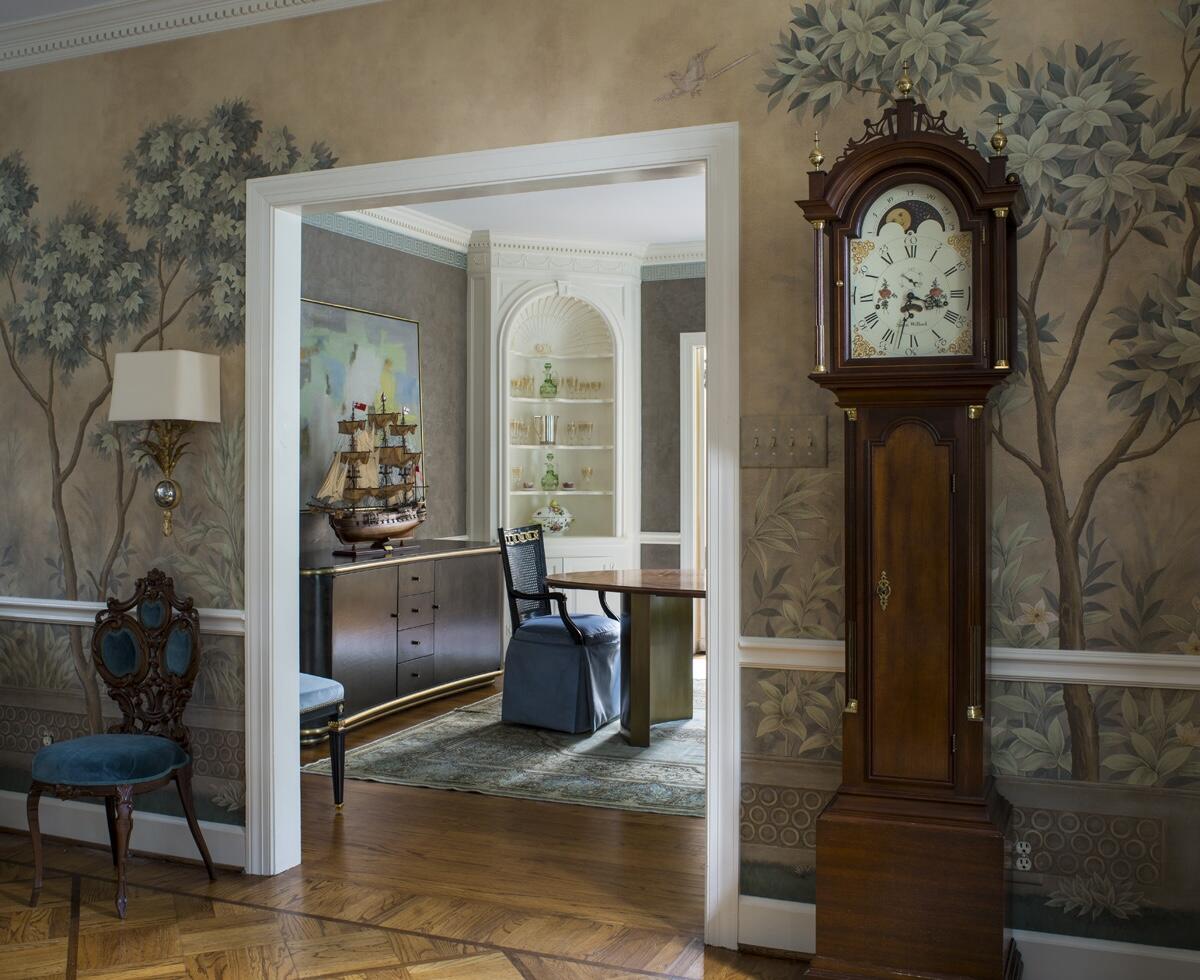
Is there one thing you know now that you wish you had known when you started your business?
I went into retail and had a store with this big staff during the recession. I risked a lot, and I lost a lot, in all that. If I could have seen then how happy and relatively successful I am now doing it like this—exactly the way that I started out doing it, really—I think it could have provided some relief. I wish I would have known that I didn’t have to have all that in order to feel like I’d done a good job, or to be recognized for my work. You can just do it the way that works for you personally, and that’s OK.
There’s a lot that I don’t do. I don’t travel to as many shows as I used to, and I rely a lot more on what we can see online in order to get going in a direction. I don’t participate in the social stuff—even around here, where there are lots of designer groups—I feel more and more like I just want to do my work, make sure that we’re incredibly zipped up and organized so we can be successful and reap the benefits from that. I don’t spend a ton of time posting stuff on social media anymore, and even having somebody else do it had its own set of challenges.
I think it’s making these relationships, reaching out and being proactive about that stuff, and doing a really good job at my job. Beyond that, it’s making sure that my projects are beautiful and they’re photographed well—that’s what I spend my energy doing. And there are some losses with that, but I guess that’s what I value.
What does success look like for you today?
I think everybody [on my team] spending 75 percent of their time doing the stuff they love and are good at—I’m a big believer that that’s possible. We’re not always able to land that, but when we have our yearly reviews, it’s like, “Let’s change your job if you’re not loving it,” or “Let’s find somebody else to do the job.” I think that’s a big piece of our success: unity, and the fact that everybody’s spending as much time as possible doing stuff they’re really good at. I also have a rule that nobody’s allowed to look at their email at night or on the weekend. I love my free time, and if we’re able to achieve that level of balance, that means we’re achieving some success here and not just toiling endlessly in order to pay the bills.
Success is also the belief that my clients have in us, whether that’s the end client or a builder or contractor. Hearing them tell others that they can really count on us—that’s a big deal to me. So in addition to making some good money and enjoying our work, knowing that we set a standard for performance and reliability is the greatest success to me.
To learn more about Heather Garrett, visit her website or find her on Instagram.





























